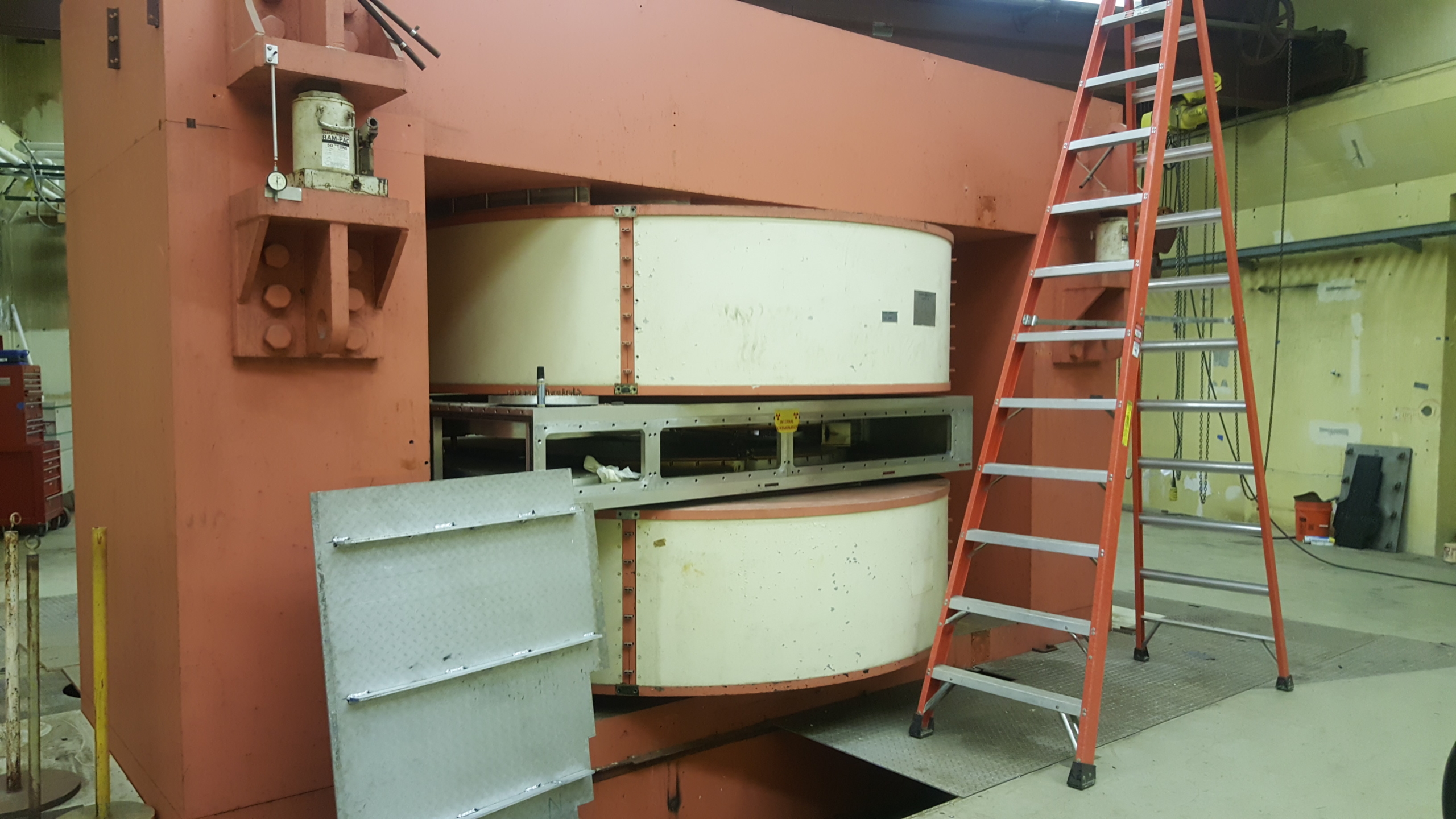LOCATION: NASA Glenn Research Center | Cleveland, OH
PROJECT SIZE: 22,500 square feet | Demolition & Disposal of 347 ton, 69” wide Cyclotron Particle Accelerator | Demolished 6600 SQ FT subgrade concrete facility | 7,000 CY Exported as Solid Waste | 7,000 CY imported from onsite borrow area
FINAL CONTRACT VALUE: $4.4M
PROJECT SCOPE: Pinnacle was contracted by NASA Glenn Research Center (GRC) to decontaminate and demolish the subgrade Cyclotron Facility site at Lewis Field Campus. The Cyclotron Facility was constructed in the late 1940’s. Shortly thereafter, the facility was expanded to include a new “Target Room” later designated as the Neutron Therapy Room where early Radiology Medical Research was conducted. In addition to decontamination and demolition, this project entailed installing a steel platform on top of an existing roof and a new switchgear to feed an existing motor control center within a mission critical research wing of an existing building.
This project was released as a Design-Build wherein Pinnacle was responsible for designing a plan for decontaminating, decommissioning, and demolishing the cyclotron and the cyclotron facility along with backfilling the site and restoring a useful greenspace to the NASA GRC Campus.
The engineered solution implemented included jacking the cyclotron up onto skates and sliding it from the test cell to the skylight room along a graphite rail system through the shield chamber room with only 5/8” clearance to the ceiling. The cyclotron was then disassembled into seven different pieces, rigged, and carried out of the basement through an existing skylight. Each piece of the cyclotron was then placed onto a truck for disposal. In this manner, Pinnacle reduced safety concerns of tearing off the cyclotron vault roof to gain access to the cyclotron and the need for lifting and rigging equipment to be supported by the structure of sub-grade building from the 1940s. Once the cyclotron was removed, independent analysis and surveying on the existing concrete structure was performed, which allowed the Nuclear Regulatory Commission (NRC) to amend the NASA license, meaning the concrete and soil could be treated as normal, non-nuclear waste. This drastically reduced potential exposure to the public by reducing the miles that nuclear waste would have to travel on public roadways and afforded the government a savings of over $1M.
The completed project allowed NASA to amend their license with the NRC and to demolish the cyclotron facility in a responsible, safe, efficient manner while reducing exposure to the public via roadways. Instead of being an eye sore, the backfilled, compacted project site is now a visually aesthetic corner on campus.


